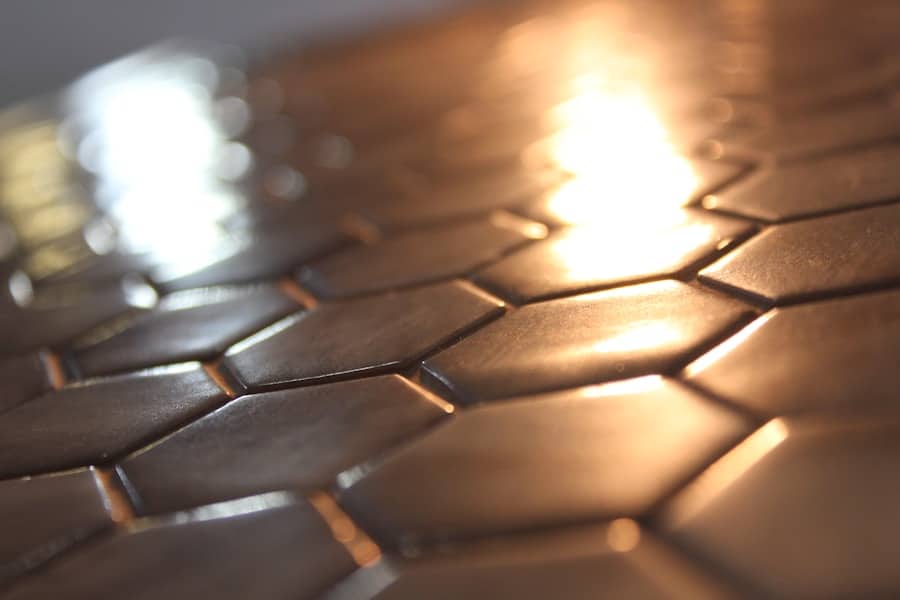Self-healing materials represent a groundbreaking innovation in material science, characterized by their ability to autonomously repair damage without human intervention. This remarkable property is inspired by biological systems, where living organisms can heal wounds and regenerate tissues. The concept of self-healing materials has gained traction over the past few decades, driven by the need for more durable and sustainable products across various industries.
These materials can significantly enhance the longevity and reliability of consumer products, reducing waste and the need for frequent replacements. The mechanisms behind self-healing materials can be broadly categorized into two types: intrinsic and extrinsic healing. Intrinsic self-healing materials possess built-in capabilities to recover from damage due to their molecular structure, while extrinsic self-healing materials rely on external agents, such as healing agents or microcapsules, that are released upon damage.
This dual approach allows for a wide range of applications, from electronics to textiles, making self-healing materials a versatile solution for modern consumer technology challenges.
Key Takeaways
- Self-healing materials have the ability to repair themselves when damaged, leading to longer-lasting and more durable consumer products.
- Current applications of self-healing materials in consumer technology include self-healing smartphone screens and automotive coatings, offering improved durability and longevity.
- Advancements in self-healing materials research are focused on developing new polymers and nanomaterials with enhanced healing capabilities, as well as exploring potential applications in electronics and wearables.
- Potential future applications of self-healing materials in consumer technology may include self-healing batteries, flexible electronics, and self-repairing fabrics, revolutionizing the durability and lifespan of everyday products.
- Challenges and limitations of self-healing materials in consumer technology include high production costs, limited scalability, and the need for further research to optimize healing efficiency and durability.
Current Applications of Self-Healing Materials in Consumer Technology
Smartphones and Tablets: Maintaining Aesthetic Appeal
Manufacturers are incorporating self-healing coatings that can recover from light abrasions, allowing users to enjoy a pristine device for a longer period. This innovation maintains the aesthetic appeal and structural integrity of devices.
Flexible Electronics: Withstanding Bending and Stretching
The demand for self-healing materials has surged with the growing popularity of wearable technology. Researchers have developed self-healing conductive polymers that can restore electrical conductivity after being damaged. This innovation ensures that wearable devices remain functional even after experiencing wear and tear.
A New Era for Wearable Devices
Self-healing materials are poised to transform the wearable technology industry, enabling devices to withstand constant movement and stress. This innovation will revolutionize the way we interact with wearable devices, ensuring a seamless user experience.
Advancements in Self-Healing Materials Research

The field of self-healing materials is rapidly evolving, with researchers continuously exploring new formulations and mechanisms to enhance their effectiveness.
For example, scientists have developed self-healing hydrogels that can repair themselves within minutes when exposed to specific stimuli, such as heat or light.
Moreover, advancements in nanotechnology have opened new avenues for creating self-healing materials with enhanced properties. By incorporating nanoparticles into traditional polymers, researchers have been able to create composites that exhibit superior mechanical strength and healing capabilities.
These nanocomposites can be tailored for specific applications, such as impact-resistant coatings for consumer electronics or durable materials for automotive interiors. The integration of nanotechnology not only improves the performance of self-healing materials but also expands their potential uses across various sectors.
Potential Future Applications of Self-Healing Materials in Consumer Technology
Looking ahead, the potential applications of self-healing materials in consumer technology are vast and varied. One promising area is in the development of self-healing batteries. As the demand for longer-lasting and more efficient energy storage solutions grows, researchers are investigating ways to incorporate self-healing mechanisms into battery technology.
By enabling batteries to repair themselves after sustaining damage, manufacturers could significantly extend their lifespan and reduce the environmental impact associated with battery disposal. Additionally, self-healing materials could revolutionize the design of smart textiles. Imagine clothing that can automatically mend small tears or punctures, maintaining both functionality and aesthetics over time.
This innovation could lead to a new era of sustainable fashion, where garments last longer and require less frequent replacement. Furthermore, smart textiles could integrate sensors that monitor wear and tear, providing users with real-time feedback on the condition of their clothing and prompting repairs when necessary.
Challenges and Limitations of Self-Healing Materials in Consumer Technology
Despite the promising potential of self-healing materials, several challenges and limitations must be addressed before widespread adoption can occur. One significant hurdle is the cost associated with developing and manufacturing these advanced materials. Currently, many self-healing polymers and composites are more expensive than traditional materials, which can deter manufacturers from incorporating them into consumer products.
As research progresses and production techniques improve, it is hoped that costs will decrease, making self-healing materials more accessible. Another challenge lies in the consistency and reliability of the healing process. While some self-healing materials can effectively repair minor damage, they may not be suitable for all types of injuries or stressors.
For instance, severe impacts or extensive damage may exceed the material’s healing capabilities, leading to product failure. Researchers are actively working on enhancing the robustness of these materials to ensure they can withstand a wider range of conditions while still providing effective self-repair.
Environmental Impacts of Self-Healing Materials in Consumer Technology

Environmental Concerns in Production
However, it is essential to evaluate the environmental impact of producing these advanced materials. The synthesis of some self-healing polymers may involve processes that are not environmentally friendly or may require toxic chemicals.
Towards Eco-Friendly Alternatives
As research continues, there is a growing emphasis on developing eco-friendly alternatives that do not compromise performance while minimizing environmental harm. The goal is to create self-healing materials that not only enhance product longevity but also align with sustainability goals throughout their lifecycle.
A Sustainable Future for Self-Healing Materials
Consumer Acceptance and Adoption of Self-Healing Materials in Consumer Technology
For self-healing materials to become mainstream in consumer technology, acceptance among consumers is crucial. Education plays a vital role in this process; consumers need to understand the benefits and functionalities of these innovative materials. Marketing strategies that highlight the advantages—such as reduced maintenance costs and enhanced durability—can help foster interest and acceptance among potential buyers.
Moreover, consumer experiences with existing products that utilize self-healing technologies will influence adoption rates. As more companies introduce self-healing features in their products—such as smartphones with scratch-resistant coatings or wearables with flexible electronics—consumers will begin to recognize their value firsthand. Positive experiences can lead to increased demand for similar technologies across various product categories, ultimately driving further innovation in the field.
The Outlook for Self-Healing Materials in Consumer Technology
The future of self-healing materials in consumer technology appears promising as research continues to advance and applications expand across various sectors. With ongoing innovations aimed at improving performance, reducing costs, and enhancing environmental sustainability, these materials are poised to play a significant role in shaping the next generation of consumer products. As manufacturers increasingly recognize the benefits of incorporating self-healing technologies into their offerings, consumers can look forward to a future where products are not only more durable but also contribute positively to environmental sustainability efforts.
The journey toward widespread adoption will require collaboration between researchers, manufacturers, and consumers alike. By addressing challenges related to cost, reliability, and environmental impact while promoting awareness and education about these innovative materials, the industry can pave the way for a new era in consumer technology—one characterized by resilience, sustainability, and enhanced user experience through the power of self-healing materials.
In a recent article discussing the future of self-healing materials in consumer technology, it is interesting to note how advancements in materials science are revolutionizing the way we interact with our devices. This innovation is not only impacting consumer technology but also various other industries. For example, affiliate marketing on platforms like Facebook is becoming one of the best niches for marketers to explore (source). Additionally, teachers are increasingly relying on technology in the classroom, making the choice of the best laptop for educators in 2023 a crucial decision (source). Furthermore, software for furniture design is also evolving to meet the demands of modern consumers and designers alike (source). The interconnectedness of these advancements highlights the importance of staying informed about the latest trends in technology and materials science.
FAQs
What are self-healing materials?
Self-healing materials are substances that have the ability to repair damage to themselves without the need for external intervention. This can be achieved through various mechanisms such as chemical reactions, shape memory, or microcapsules containing healing agents.
How are self-healing materials used in consumer technology?
Self-healing materials are being incorporated into consumer technology products such as smartphones, tablets, and wearables to improve durability and longevity. These materials can help devices withstand scratches, cracks, and other forms of damage, ultimately extending their lifespan.
What are the benefits of self-healing materials in consumer technology?
The use of self-healing materials in consumer technology can lead to reduced maintenance and repair costs for consumers. It can also contribute to a more sustainable approach to product design by minimizing the need for frequent replacements and reducing electronic waste.
Are there any limitations to self-healing materials in consumer technology?
While self-healing materials offer promising benefits, there are limitations to their effectiveness. For example, they may not be able to fully repair severe damage or wear and tear over time. Additionally, the cost of implementing self-healing materials in consumer products may impact their affordability.
What does the future hold for self-healing materials in consumer technology?
The future of self-healing materials in consumer technology looks promising, with ongoing research and development aimed at improving their effectiveness and cost-efficiency. As technology advances, we can expect to see more widespread adoption of self-healing materials in a variety of consumer products.

